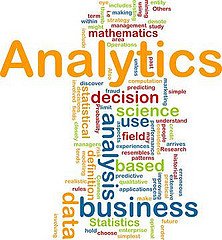 According to Eric Cooper (brightedge.com)- Business Intelligence group consisted of one or two practitioners with a very specific skill set who crunched numbers. It was much more difficult to collect, analyze and interpret large amounts of customer data. The process took weeks rather than days, and the results of their work would eventually be distilled into one or two recommendations and shared with a decision maker. No one really questioned what it was that they were doing, because very few people had any idea what they were doing and even fewer people had access to the data they were using to make these recommendations
According to Eric Cooper (brightedge.com)- Business Intelligence group consisted of one or two practitioners with a very specific skill set who crunched numbers. It was much more difficult to collect, analyze and interpret large amounts of customer data. The process took weeks rather than days, and the results of their work would eventually be distilled into one or two recommendations and shared with a decision maker. No one really questioned what it was that they were doing, because very few people had any idea what they were doing and even fewer people had access to the data they were using to make these recommendations
He also says that if you fast forward twenty years virtually everyone in the organization considers him or herself an “analyst” when it comes to various forms of marketing data. Anyone with a Facebook login or a Twitter handle can theoretically download, analyze, and make recommendations based on the data collected from these sites. With all of the practical “how-to” information regarding analytics now widely available on the internet, the need for years of very specific training has been lessened. Analytical software packages have progressed to the point where they can either be easily integrated with standard back office applications (Microsoft Power Pivot), or analytic functions are built into other data collection software which makes them easily accessible to the end user (SiteCatalyst, Google Analytics).
Wisegeeks define marketing metrics a subset of marketing analytics that helps companies understand the entire process from the creation of marketing campaigns to their influence on consumers. Metrics can include information on frequency of consumer purchases, customer ratings on product value or quality, loyalty from customers with secondary purchases, shifts in market share, or competitor product offerings and the rate of return on advertising campaigns. These metrics help companies determine how to change their message or if the entire marketing process does little to provide additional value to the company.
I strongly believe that every B2B marketing organization has goals and objectives, but how do you know if those goals are realistic? Utilizing analysis, you are able to focus and predict realistic goals for your organization. Some possible goals may include the following:
- Improve engagement and conversion rates
- Increase organic search traffic to your site
- Decrease costs and improve efficiency through a lead management process
